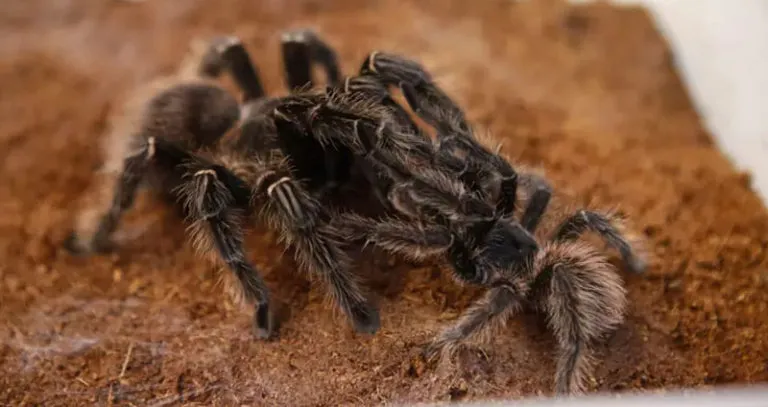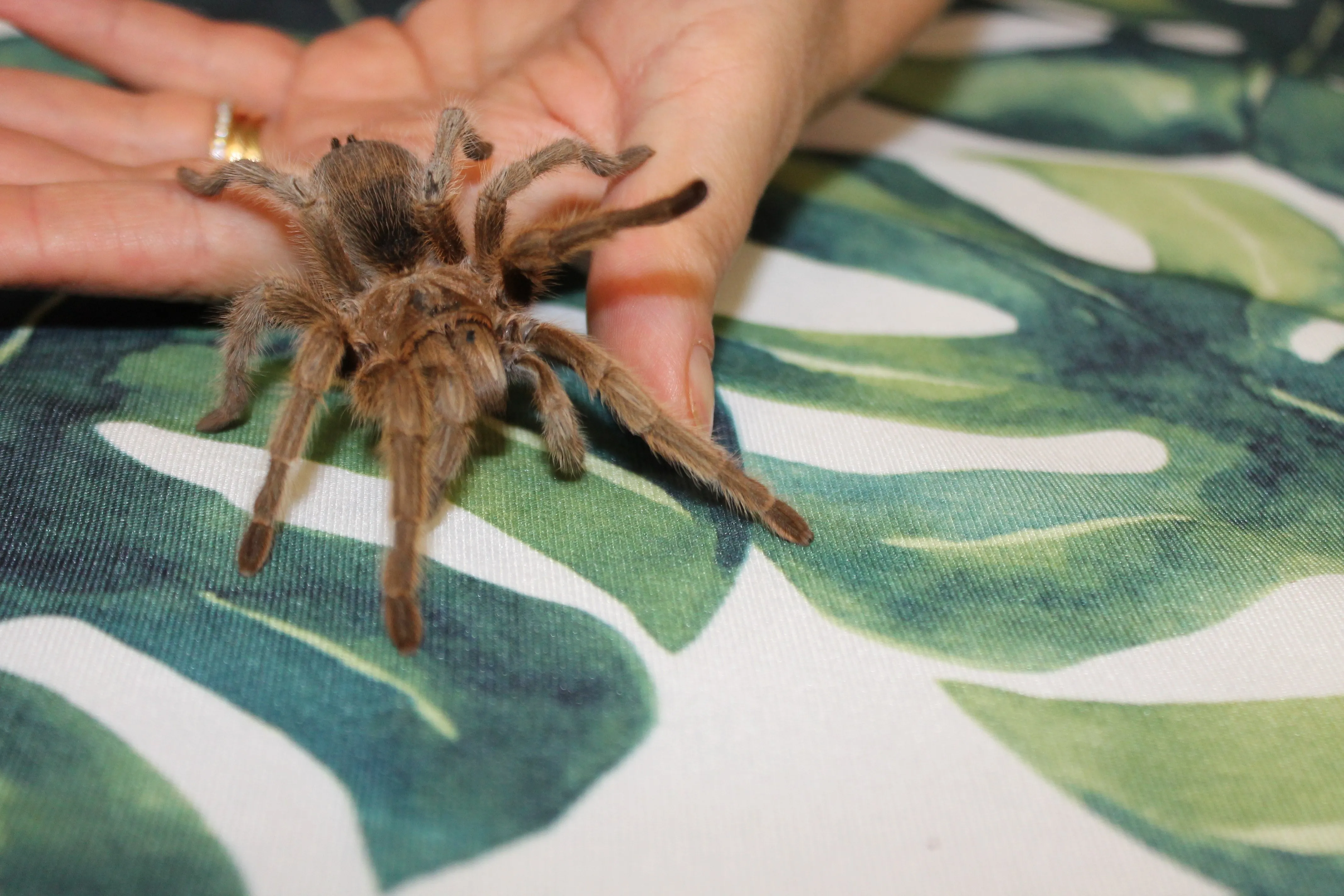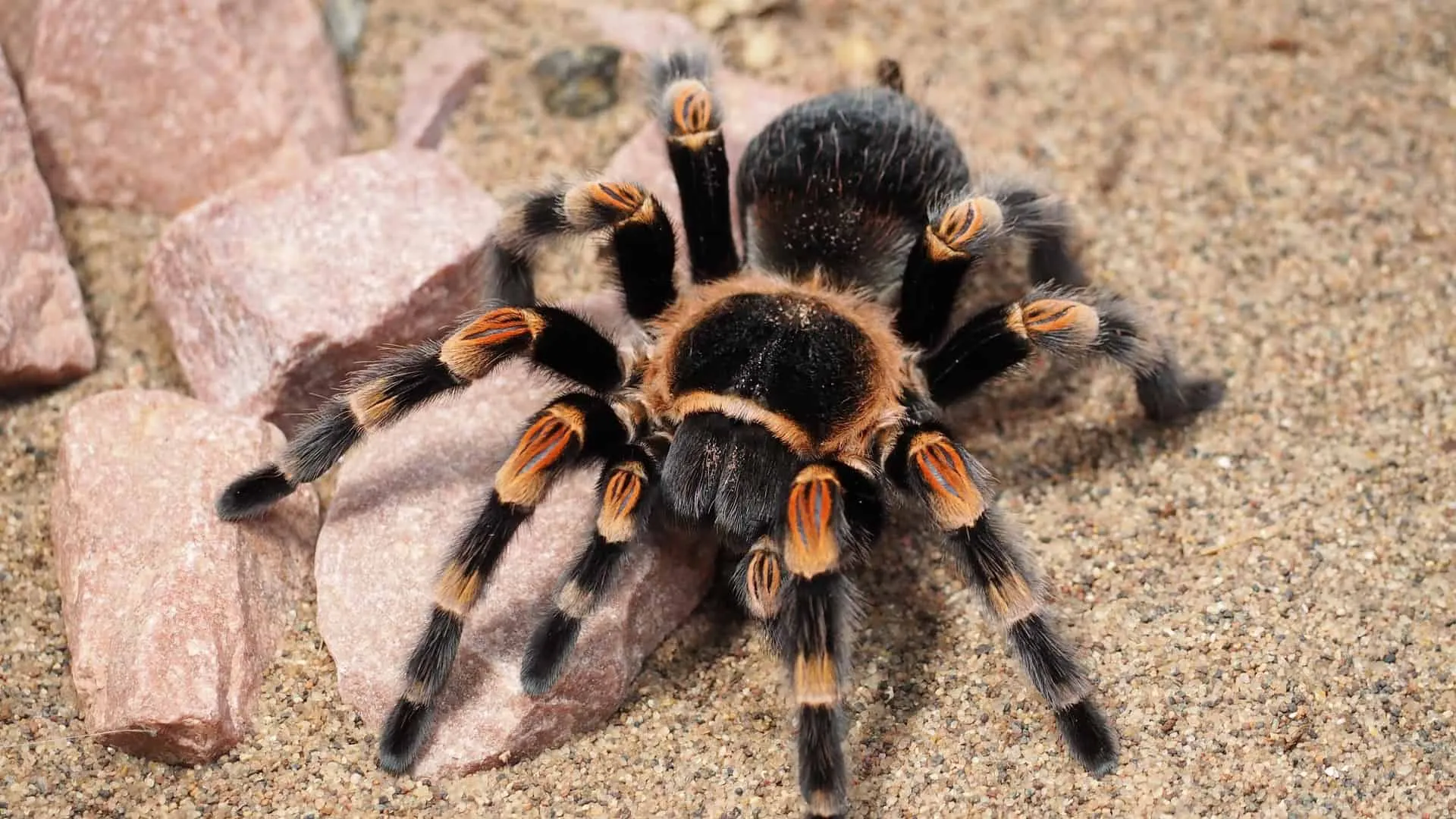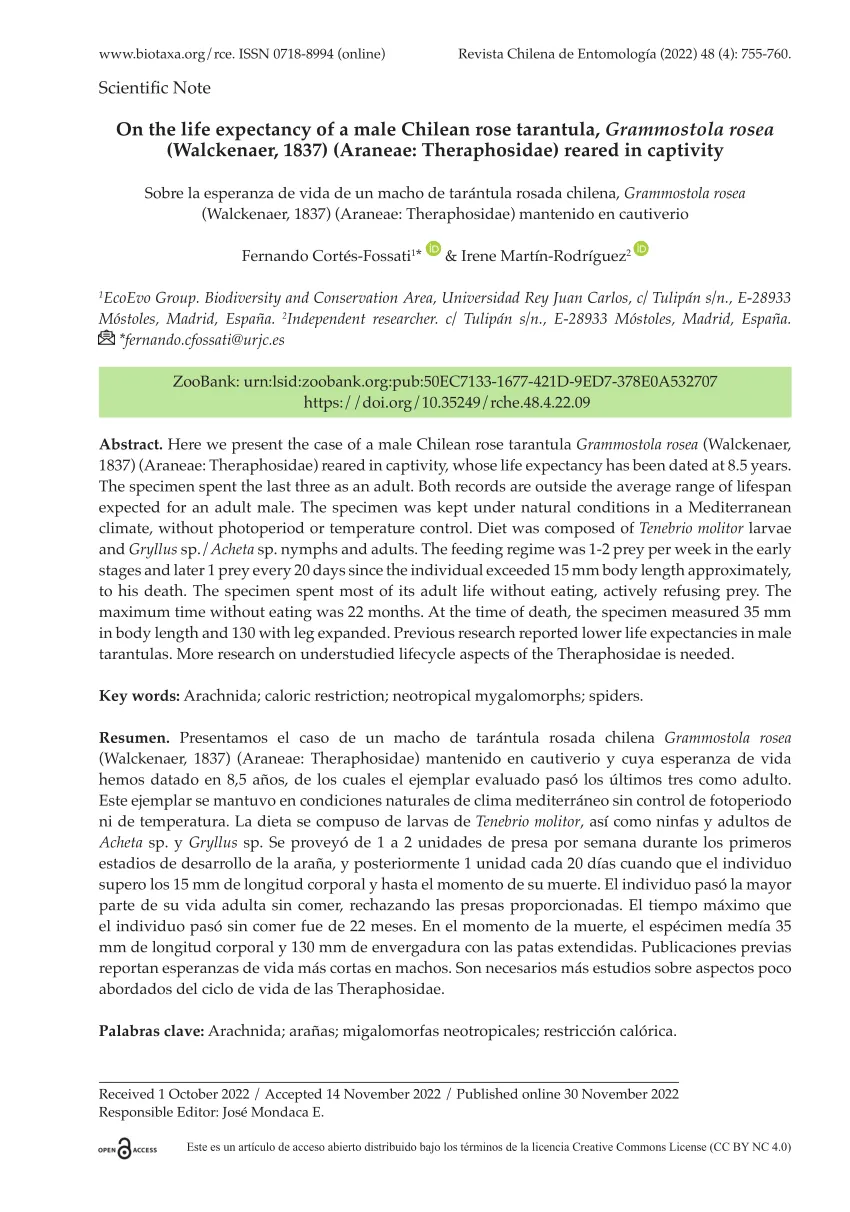What is Tarantula Life Expectancy
Tarantulas, with their impressive size and captivating presence, have always fascinated both pet enthusiasts and wildlife observers. One of the most common questions about these eight-legged creatures revolves around their lifespan. The life expectancy of a tarantula can vary significantly depending on several factors, including the species, gender, and the environment in which they live. Understanding these factors is crucial for anyone considering a tarantula as a pet or simply curious about their natural history. Unlike many other pets, tarantulas boast a surprisingly long lifespan, making them a long-term commitment for responsible owners. Their longevity adds to their appeal, offering a unique opportunity to observe and appreciate these fascinating arachnids over many years. This article aims to delve into the intricacies of tarantula life expectancy, exploring the various elements that contribute to their longevity and providing insights into how to ensure a healthy and fulfilling life for these remarkable creatures.
Factors Influencing Tarantula Life Span
Several key factors play a significant role in determining how long a tarantula will live. These factors range from their genetic makeup to the conditions of their living environment. Understanding these influences can help owners provide the best possible care and maximize their pet’s lifespan. A tarantula’s life is a delicate balance, and any imbalance in these factors can have a direct impact on their longevity. Therefore, responsible tarantula ownership involves a holistic approach, considering every aspect of their well-being, from the quality of their diet to the cleanliness of their enclosure. Addressing these factors proactively can contribute to a happier, healthier life for your tarantula.
Species and Their Lifespans

The species of tarantula is a primary determinant of its life expectancy. Some species are naturally longer-lived than others, with certain types known to live for over 20 years in captivity. The diversity among tarantula species is remarkable, with each possessing unique characteristics that affect their lifespan. Careful research is essential when choosing a tarantula, as different species come with different care requirements and expected lifespans. This knowledge helps in making an informed decision, ensuring that you can provide the best possible environment for your chosen species. By understanding the specific needs of each species, you can tailor your care to optimize their longevity and well-being.
New World Tarantulas
New World tarantulas, which originate from the Americas, are generally known for their longer lifespans, especially the females. These species often live for 15 to 25 years, and sometimes even longer under ideal conditions. Their resilience and adaptability contribute to their impressive longevity. Popular New World species, such as the Chilean Rose Hair and the Mexican Red Knee, are favorites among pet owners because of their docile temperament and relatively long lifespan. Proper care, including a suitable habitat and diet, plays a crucial role in maximizing their potential lifespan. These tarantulas’ enduring appeal makes them a rewarding choice for those seeking a long-term pet companion, and it is a commitment that can last for over two decades.

Old World Tarantulas
Old World tarantulas, from Asia, Africa, and Australia, tend to have shorter lifespans compared to their New World counterparts. Typically, females live for 10 to 15 years, while males often have much shorter lifespans. The varied environments of their native habitats can influence their life expectancy. Despite their shorter lifespans, these species are still popular due to their vibrant colors and unique behaviors. Owning an Old World tarantula requires a different approach, as they often have more specific care needs. Understanding these differences is essential for ensuring the well-being of your pet, allowing them to live a full and healthy life within their natural timeframe.

Gender Differences in Life Expectancy

Gender is a significant factor in a tarantula’s lifespan. The difference in life expectancy between male and female tarantulas is often dramatic. This variance is primarily due to the reproductive cycle and the associated physiological demands it places on the animals.
Male Tarantulas
Male tarantulas typically have a much shorter lifespan than females, often living only for a few years after reaching maturity. This is because their primary role is to reproduce. Once they mature, their sole focus is to find a mate. They often stop eating, and their bodies undergo changes that lead to a shorter life. After mating, male tarantulas often die soon after, as their bodies are depleted of energy. Understanding this lifecycle helps owners appreciate the unique characteristics of each tarantula and provide the best possible care during their respective life stages.
Female Tarantulas
Female tarantulas can live for a remarkably long time, often exceeding 20 years in some species. Their lifespan is significantly extended because they do not undergo the same reproductive pressures as males. A female tarantula’s body focuses on growth and molting, which is essential for their overall health and longevity. Their ability to store sperm allows them to reproduce multiple times throughout their lives. Their longer lifespan makes them a rewarding choice for pet owners seeking a long-term companion. Providing them with proper care, including a suitable habitat and consistent feeding, is key to maximizing their lifespan.

Environmental Factors Affecting Lifespan

The environment in which a tarantula lives has a profound impact on its lifespan. Maintaining optimal conditions is essential to promote longevity and ensure a healthy life. This includes careful management of the enclosure, temperature, humidity, and diet. By providing the appropriate environment, owners can significantly increase their pet’s chances of living a long and fulfilling life. These environmental factors are not merely cosmetic; they are fundamental to the tarantula’s well-being. Any neglect in these areas can lead to stress, illness, and a shortened lifespan. Therefore, creating and maintaining the correct environment is paramount in responsible tarantula ownership.
Enclosure and Habitat
The enclosure, or habitat, is a tarantula’s home and greatly influences its health and longevity. The enclosure should be appropriately sized for the species, allowing the tarantula to move freely while also feeling secure. It should include proper substrate, hiding places, and ventilation. A well-designed enclosure mimics the tarantula’s natural environment, reducing stress and encouraging natural behaviors. The size of the enclosure is particularly important, as too small a space can lead to stress and stunted growth. Regularly cleaning and maintaining the enclosure prevents the buildup of harmful bacteria and ensures a healthy environment for your tarantula. The right enclosure is a fundamental aspect of responsible tarantula care.

Temperature and Humidity
Maintaining the correct temperature and humidity levels is crucial for a tarantula’s health. Different species have different requirements, but generally, tarantulas thrive in warm and humid environments. Temperature and humidity levels should be monitored regularly using a thermometer and hygrometer. Improper temperature or humidity can lead to molting problems, dehydration, and other health issues that can shorten their lifespan. Providing the right climate is a vital aspect of ensuring the well-being of a tarantula. It also helps maintain their metabolism, which is essential for a long and healthy life.
Diet and Nutrition

A balanced diet is another critical factor in determining a tarantula’s lifespan. Tarantulas are carnivores and require a diet consisting primarily of insects. The size and type of insects should be appropriate for the tarantula’s size. Overfeeding can lead to obesity, while underfeeding can cause malnutrition and stunted growth. The nutritional value of the food is also important; therefore, feeding a variety of insects helps ensure a balanced diet. Fresh water should be provided at all times. The proper diet is essential to support the tarantula’s growth, molting, and overall health, significantly impacting its longevity.

Common Health Issues and Lifespan
Tarantulas, like all living creatures, are susceptible to health issues that can affect their lifespan. Being aware of these potential problems and knowing how to address them is an essential part of responsible tarantula ownership. While tarantulas are generally hardy, several conditions can impact their health and, consequently, their longevity. Regular monitoring and preventative measures are vital to ensure they live a long and healthy life.
Parasites and Diseases
Tarantulas can be affected by parasites and diseases. Parasites, such as mites, can infest the tarantula and cause significant health problems. Diseases, often resulting from bacterial or fungal infections, can also occur. Maintaining a clean enclosure, providing fresh water, and quarantining new tarantulas are essential preventative measures. Recognizing the signs of illness early and seeking veterinary care can help prevent these issues from shortening a tarantula’s life. Regular observation can help catch problems early before they escalate, increasing the chances of successful treatment and a return to health. Keeping a close watch can make a significant difference in ensuring your tarantula’s longevity.
Molting and Its Impact

Molting is a natural process where tarantulas shed their exoskeleton. While it is essential for growth and regeneration, it can be a stressful time. Molting problems, such as the tarantula getting stuck during the process, can be life-threatening. Ensuring the environment is at the correct humidity level is especially crucial during molting. Providing a stress-free environment can help minimize the risks associated with molting. After molting, tarantulas are vulnerable and should be handled carefully to avoid injury. Understanding the molting process and knowing how to support your tarantula during this period is critical to ensuring a long and healthy life.

Tips to Maximize Your Tarantula’s Life Span
Several practical steps can be taken to help maximize a tarantula’s life span. These tips focus on preventative care, proper maintenance, and responsible ownership. Implementing these practices can create a healthier and more enriching environment for your tarantula, allowing it to live a long and fulfilling life. From providing a suitable environment to being mindful of potential health risks, these practices collectively contribute to the well-being of your pet.
Proper Care and Maintenance
Proper care and maintenance are fundamental to increasing a tarantula’s lifespan. This includes regular cleaning of the enclosure, ensuring the correct temperature and humidity, and providing a balanced diet. Monitoring the tarantula’s behavior and appearance is also essential, as changes can indicate potential health issues. Providing a safe and comfortable environment reduces stress, which significantly impacts the tarantula’s overall health. Regular upkeep is not just about keeping the enclosure tidy; it’s about creating a habitat that supports the tarantula’s natural needs and promotes its long-term health.

Regular Veterinary Checkups

Although tarantulas do not typically require routine veterinary visits, it is helpful to have a veterinarian familiar with exotic pets. Early detection and treatment can make a significant difference in managing potential health issues. Being proactive in your pet’s health care, including seeking professional advice when needed, will contribute to their overall well-being. A veterinarian specializing in exotic animals can provide valuable insights and guidance on how to best care for your tarantula, increasing its chances of a long and healthy life.
In conclusion, the life expectancy of a tarantula is a fascinating topic, influenced by a variety of factors. Understanding these factors and providing appropriate care is crucial for ensuring your tarantula lives a long and healthy life. Species, gender, and environmental conditions all play significant roles. By providing the correct habitat, diet, and regular care, you can greatly increase the chances of your tarantula reaching its full lifespan, allowing you to enjoy the company of these remarkable creatures for many years to come.
